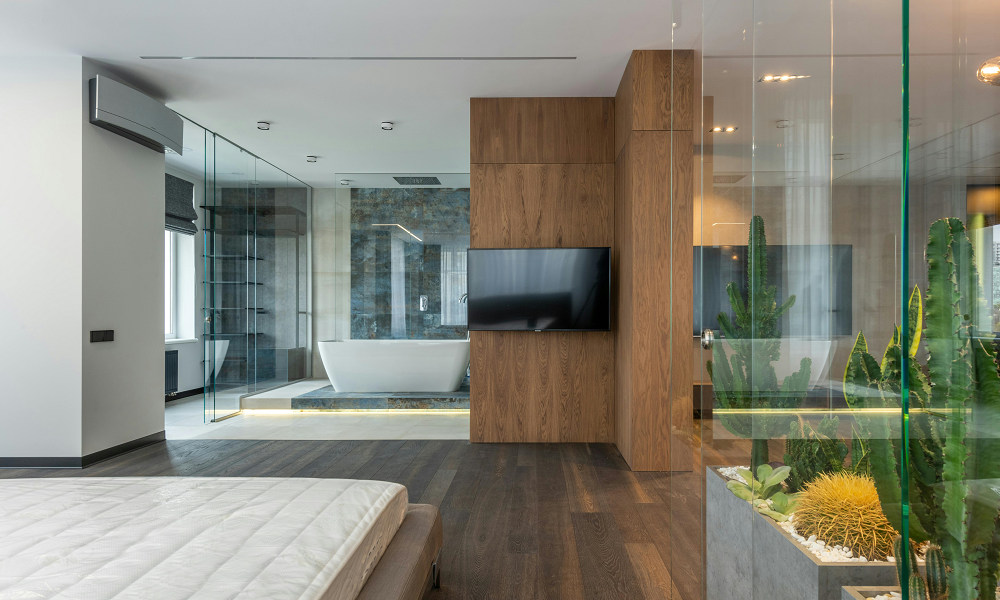Reviews
How to Choose Good Bathroom Windows?

When purchasing windows for a house or apartment, we often choose identical models for all rooms. We forget that a humid bathroom will have slightly different requirements for window joinery compared to, for example, a living room. What should you pay attention to when selecting bathroom windows? Which bathroom windows will work well in a room with a shower, a bathing area, or a toilet?
Moisture-Resistant Bathroom Windows
Bathroom windows, more so than those in the living room or bedroom, are exposed to moisture. In the bathroom, the air humidity increases not only during and immediately after taking a bath or shower; tiny droplets of water vapor settle on all surfaces and dry over the next few hours. Therefore, bathroom windows should be resistant to regular and prolonged contact with water. A better choice for a bathroom-and also for a laundry room-is to opt for plastic bathroom windows made of uPVC or aluminum models rather than wooden ones. Made of polyvinyl chloride, these windows maintain their appearance even with regular contact with water or steam, without deforming. Their window frame surfaces also do not peel, as can sometimes happen with painted wooden windows.
Ventilation in Bathroom Windows
Due to the high humidity in the room, bathroom windows should also allow for effortless and efficient ventilation. Therefore, choosing non-opening windows (so-called fixed windows) is a poor idea for a bathroom. Even the best natural, mechanical, or recuperative ventilation will not be sufficient after a bath or shower, and ineffective ventilation in the bathroom is responsible for mold development. In such a situation, it is best to ventilate the room using the bathroom window. Is it necessary to tilt or open its sash (or sashes)? Definitely not. For example, OKNOPLAST offers bathroom windows (and more) with the efficient peripheral ventilation system effiAIR. This system enables the bathroom windows to be unsealed along the entire perimeter by 6 mm. Thanks to special hardware with openable and removable functions, it provides effective air circulation while simultaneously protecting the home against burglary.
Ease of Cleaning Bathroom Windows
Similar to kitchen windows-but even more so than windows in the living room or bedroom-bathroom windows are prone to unsightly streaks caused by condensing water vapor. An important feature of bathroom windows should therefore be their ease of cleaning. In this case, once again, the best choice is bathroom windows made of uPVC, that is, plastic windows. Their frames, glazing beads, and panes can be cleaned with gentle detergents, soft sponges, and cloths. Plastic window profiles are also more resistant to micro-scratches than, for example, painted wood. When choosing bathroom windows that are easy to clean, it is also advisable to consider having their sashes openable. This allows you to wash the bathroom windows from both sides from inside the room, without having to go outside or set up a ladder.
Bathroom Windows That Provide Privacy
A bathroom is a room where ensuring privacy is extremely important. Therefore, when choosing bathroom windows, pay attention to the options available in this regard. Of course, you can opt for classic bathroom windows with clear glass and use appropriate internal or external window coverings, such as blinds or shades. However, a better idea might be choosing bathroom windows with patterned glass. They are more durable than the popular, low-cost window glass veneers and look decidedly more aesthetically pleasing since they are made entirely of frosted glass (without the use of film). Such a bathroom window allows sunlight to pass through while distorting the view, thereby providing a sense of privacy for those using the bathroom.
Bathroom Windows in the Right Size
When choosing bathroom windows, you should also consider their size. What dimensions should a bathroom window have? If you are planning a bathroom with a window, the architect will likely use the popular ratio of 1:12 (window area to room floor area) for spaces where you spend less time at home or in the apartment. In practice, this means that in a bathroom with a floor area of about 43 square feet, the bathroom window should have an area of at least approximately 3.7 square feet. This corresponds to a bathroom window with dimensions of roughly 24 inches by 24 inches, for example. It is worth noting that regulations do not prohibit bathrooms from being windowless, as they are rooms used for very short periods of time. Nevertheless, it is recommended to allow such interiors to be illuminated by sunlight and to be regularly ventilated. This is achievable with well-chosen bathroom windows.

-

 World1 week ago
World1 week agoEthiopian volcano erupts for first time in thousands of years
-

 Health2 days ago
Health2 days ago8 kittens die of H5N1 bird flu in the Netherlands
-

 Legal7 days ago
Legal7 days agoUtah Amber Alert: Jessika Francisco abducted by sex offender in Ogden
-

 US News6 days ago
US News6 days agoExplosion destroys home in Oakland, Maine; at least 1 injured
-

 Health7 days ago
Health7 days agoMexico’s September human bird flu case confirmed as H5N2
-

 Legal3 days ago
Legal3 days ago15 people shot, 4 killed, at birthday party in Stockton, California
-

 World7 days ago
World7 days agoWoman killed, man seriously injured in shark attack on Australia’s NSW coast
-

 US News2 days ago
US News2 days agoFire breaks out at Raleigh Convention Center in North Carolina




